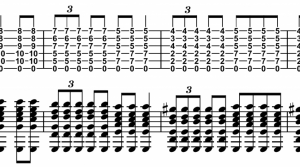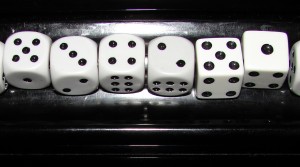This week, one of my tasks is to edit the guitar part for Impulso: Concerto for Marimba, Flamenco Guitar, and Dancer, a collaborative project with Chris Burton-Jacome. Chris is a fabulous flamenco guitarist living in Phoenix. Chris, his wife Lena, and my wife Maria will be performing the concerto in St. Louis and in Phoenix in November.
I was finding it time consuming to figure out what notes to write on the staff for the strummed chords until I started noticing patterns. For most barred chords, there seem to be only a handful of voicings that are used. I searched the web for a reference sheet that would show these voicings on a staff, but I didn’t find what I needed. So, I took some time to make up a reference sheet to help me translate what I had originally written for the guitar part into something that was playable.


